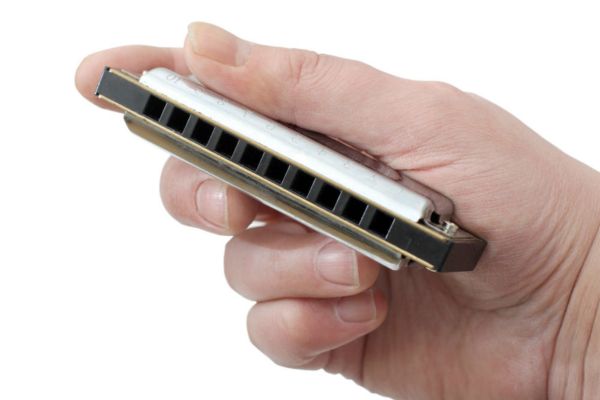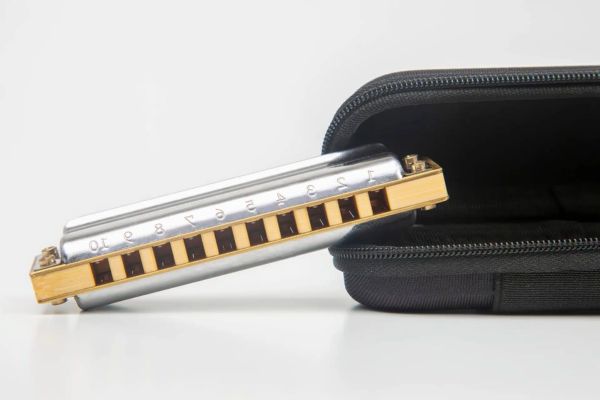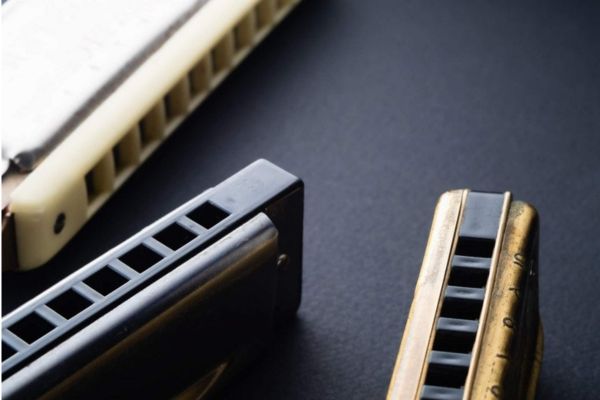When I first picked up a harmonica, I had no idea there were so many different types to choose from. Like many beginners, I was overwhelmed by the variety and unsure where to start. If you’re in the same boat, this guide is for you. We’ll explore the main types of harmonicas for beginners, helping you understand their features and which one might be the best fit for your musical journey.
Why Understanding Different Types of Harmonicas for Beginners
Selecting the best harmonica for beginners is essential for a positive learning experience. An unsuitable harmonica can cause frustration and impede progress, while a well-chosen one encourages regular practice and improvement. We’ll explore the types of harmonicas suitable for beginners and highlight their distinctive features.
The diatonic harmonica, often recommended for beginners, is designed to play a major scale and is ideal for blues and folk music. Its simplicity helps prevent beginners from feeling overwhelmed. Another option is the chromatic harmonica, which includes a button-activated sliding bar that allows access to a chromatic scale. This type is suitable for more complex music such as jazz or classical, but it’s slightly more complex than the diatonic.
It’s also important to consider the physical characteristics of the harmonica, such as size and reed material. For instance, harmonicas with plastic combs are durable and easier to maintain, which is beneficial for beginners not yet accustomed to instrument maintenance.
In choosing a harmonica, beginners should look for an instrument that balances simplicity with the ability to explore different musical styles, enhancing their enjoyment and encouraging continued musical development.

Diatonic Harmonica
The diatonic is the most popular type of harmonica for beginners. It’s the classic 10-hole harmonica most often associated with blues, rock, and folk music.
Features of the Diatonic Harmonica
- Simple Design: Typically has 10 holes, each producing two notes (one when you blow and one when you draw).
- Rich Sound: Known for its expressive and soulful sound, perfect for blues and rock.
- Affordable: Generally more budget-friendly than other types.
Why Diatonic Are Great Types of Harmonicas for Beginners
When I started playing, I chose a diatonic harmonica because it was recommended by many seasoned players. Its simplicity makes it easy to start with, and the sound is satisfying even with basic techniques. Plus, many instructional resources are tailored to diatonic harmonicas, which is a huge plus.
Recommended Diatonic Models
Hohner Special 20
- Pros: Durable, great sound, comfortable to play.
- Cons: Slightly higher price point for beginners.
- Ideal For: Beginners who are serious about learning and willing to invest in a quality instrument.
Lee Oskar Major Diatonic
- Pros: Interchangeable reed plates, robust construction.
- Cons: May require more effort to bend notes initially.
- Ideal For: Beginners interested in blues and rock.

Chromatic Harmonica
Chromatic harmonicas are more complex and versatile, featuring a button-activated sliding bar that allows you to play all the notes in the chromatic scale.
Features of the Chromatic Harmonica
- Wide Range: Can play any note in the scale, making it suitable for jazz, classical, and pop.
- Button Mechanism: The button shifts the pitch up a half step, providing access to sharps and flats.
- Larger Size: Generally bigger and heavier than diatonic harmonicas.
Why Chromatic Harmonicas Are Suitable for Beginners
While the chromatic harmonica is more advanced, some beginners prefer it for its versatility. When I experimented with a chromatic harmonica, I appreciated the ability to play more complex melodies and jazz tunes. However, it does require a bit more patience and practice to master.
Recommended Chromatic Models
Hohner Chromonica 48
- Pros: High-quality sound, durable construction.
- Cons: More expensive and heavier.
- Ideal For: Beginners interested in diverse musical genres.
Suzuki SCX-48
- Pros: Smooth sliding action, clear tone.
- Cons: Higher cost.
- Ideal For: Beginners who want to explore chromatic playing from the start.

Tremolo Harmonica
Tremolo harmonicas are distinguished by their double holes, each containing two reeds tuned slightly apart, creating a vibrating or “tremolo” effect.
Features of the Tremolo Harmonica
- Unique Sound: Produces a vibrant, warbling sound.
- Double Holes: Each hole pair produces the same note with a slight pitch variation.
- Traditional Use: Often used in folk music and traditional tunes.
Why Tremolo Harmonicas Can Be Good for Beginners
My first encounter with a tremolo harmonica was during a folk music festival. The sound was captivating, and it was easier to produce pleasing melodies even with basic skills. Tremolo harmonicas are great for beginners interested in folk and traditional music.
Recommended Tremolo Models
Hohner Echo
- Pros: Classic design, traditional sound.
- Cons: Less versatile for other music genres.
- Ideal For: Beginners focusing on folk and traditional music.
Suzuki Humming
- Pros: Crisp, clear tremolo effect, reliable build.
- Cons: Narrow genre focus.
- Ideal For: Beginners who enjoy the unique tremolo sound.

Octave Harmonica
Octave harmonicas are similar to tremolo harmonicas but with each note being an octave apart, creating a fuller sound.
Features of the Octave Harmonica
- Rich Sound: Produces a full, rich tone by doubling each note an octave apart.
- Traditional Use: Common in folk music.
- Distinct Design: Double holes like tremolo harmonicas, but tuned differently.
Why Octave Harmonicas Are Suitable for Beginners
When I tried an octave harmonica, the full-bodied sound was immediately satisfying. It’s particularly useful for folk music and can be a delightful addition for beginners exploring different sounds.
Recommended Octave Models
Hohner Auto Valve Harp
- Pros: Full, rich sound, quality construction.
- Cons: Limited to specific music styles.
- Ideal For: Beginners looking for a rich, traditional sound.
Suzuki S-64C Octave
- Pros: Excellent build, clear octave separation.
- Cons: Higher price range.
- Ideal For: Dedicated beginners who appreciate octave harmonicas.

Which Types of Harmonicas for Beginners Should You Choose?
Choosing the right harmonica depends on your musical interests and goals. For absolute beginners, I recommend starting with a diatonic harmonica due to its simplicity and availability of learning resources. As you progress, you can explore chromatic, tremolo, or octave harmonicas to broaden your musical horizons.
Understanding the different types of harmonicas for beginners is crucial in making an informed choice. Each type has its unique features and benefits, and your selection should align with your musical preferences and learning style. Whether you’re drawn to the soulful sound of a diatonic, the versatility of a chromatic, the vibrant tremolo, or the rich octave harmonica, there’s an instrument out there that’s perfect for you.


This is a great guide for beginners! I’m new to harmonica, and this article has helped me learn so much about the different types of harmonicas and how to choose the right one for me. I’m excited to start playing!
What are some of the best harmonica brands for beginners?
I would recommend the Hohner Special 20 harmonica for beginners. It’s a great quality harmonica that is very affordable.